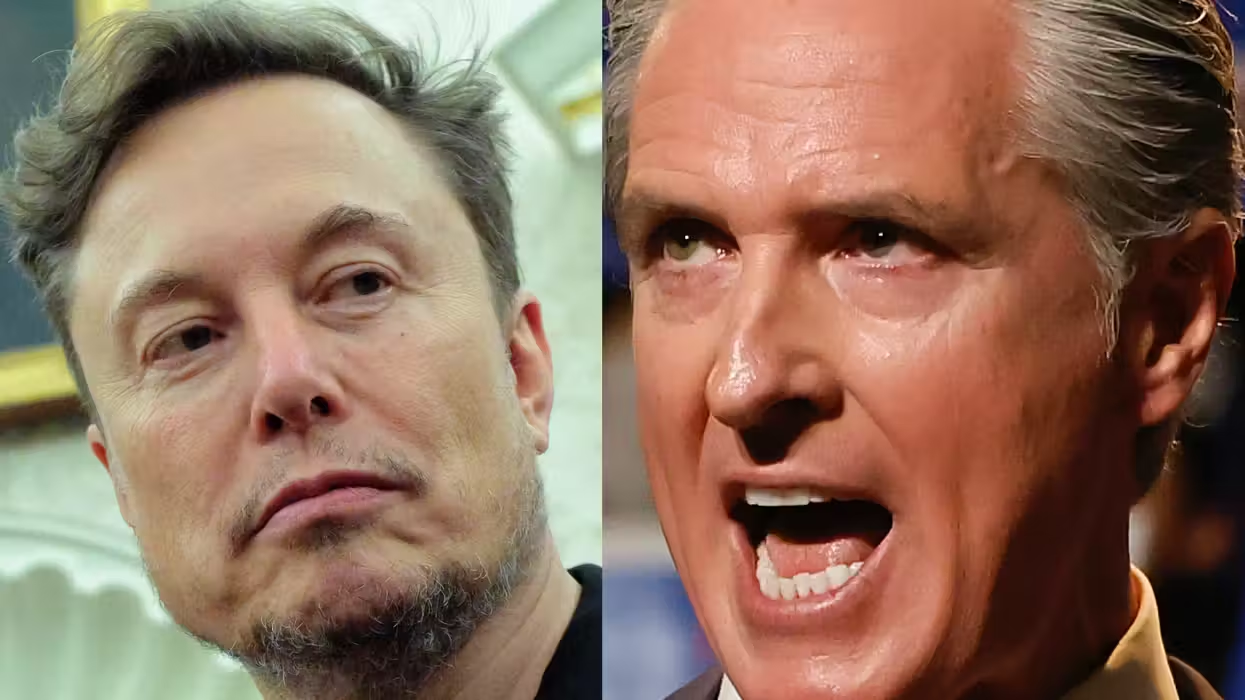
© 2025 Blaze Media LLC. All rights reserved.
It's "run as mysteriously as the C.I.A."
Google's innovative powers are now being revealed for the first time as going well beyond that of just driverless cars. Have you heard of Google X? It's ok, many people haven't and Google won't talk about it anyway, but the New York Times has some insider information on the lab where "the future is being imagined."
The Times reports that in an unknown location somewhere in the Bay Area in a lab "run as mysteriously as the C.I.A.," ideas that most would classify as hair brained, impossible, too far fetched and seemingly even useless are being developed and tested:
It’s a place where your refrigerator could be connected to the Internet, so it could order groceries when they ran low. Your dinner plate could post to a social network what you’re eating. Your robot could go to the office while you stay home in your pajamas. And you could, perhaps, take an elevator to outer space.These are just a few of the dreams being chased at Google X, the clandestine lab where Google is tackling a list of 100 shoot-for-the-stars ideas. In interviews, a dozen people discussed the list; some work at the lab or elsewhere at Google, and some have been briefed on the project. But none would speak for attribution because Google is so secretive about the effort that many employees do not even know the lab exists.
Although most of the ideas on the list are in the conceptual stage, nowhere near reality, two people briefed on the project said one product would be released by the end of the year, although they would not say what it was.
“They’re pretty far out in front right now,” said Rodney Brooks, a professor emeritus at M.I.T.’s computer science and artificial intelligence lab and founder of Heartland Robotics. “But Google’s not an ordinary company, so almost nothing applies.”
The Times goes on to state that Google co-founder Sergey Brin is most likely deeply involved with the lab, according to several sources and confirmed by Brin, though not explicitly:
“Where I spend my time is farther afield projects, which we hope will graduate to important key businesses in the future,” Mr. Brin said recently, though he did not mention Google X.
The Times speculates that robots are very likely a key area of innovation in the lab, as well as a "web of things" that could be connected to the Internet:
Among the items that could be connected: a garden planter (so it could be watered from afar); a coffee pot (so it could be set to brew remotely); or a light bulb (so it could be turned off remotely). Google said in May that by the end of this year another team planned to introduce a Web-connected light bulb that could communicate wirelessly with Android devices.
The lab has an all-star cast of top scientific minds, according to the Times, including: robotocist and artificial intelligence expert Sebastian Thrun (he teaches at Stanford and also invented the first driverless car); Stanford professor Andrew Ng whose main focus is neuroscience to artificial intelligence; and Johnny Chung Lee, who created Microsoft's Kinect.
Want to leave a tip?
We answer to you. Help keep our content free of advertisers and big tech censorship by leaving a tip today.
Want to join the conversation?
Already a subscriber?
more stories
Sign up for the Blaze newsletter
By signing up, you agree to our Privacy Policy and Terms of Use, and agree to receive content that may sometimes include advertisements. You may opt out at any time.
Related Content
© 2025 Blaze Media LLC. All rights reserved.
Get the stories that matter most delivered directly to your inbox.
By signing up, you agree to our Privacy Policy and Terms of Use, and agree to receive content that may sometimes include advertisements. You may opt out at any time.







